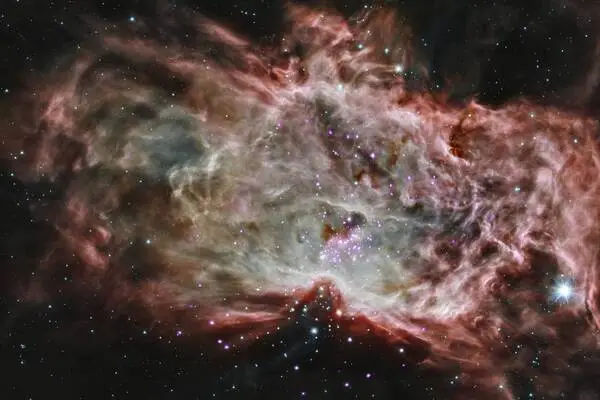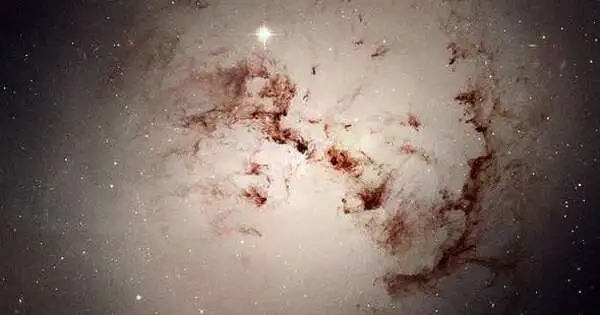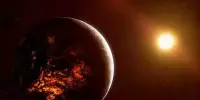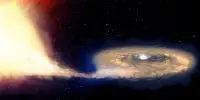Astrophysicists discovered that star formation is a self-regulating process using new simulations. In other words, stars create their own crowds. This helps to explain why stars formed in different environments have similar masses.
Last year, a team of astrophysicists led by Northwestern University launched STARFORGE, a project that produces the most realistic, high-resolution 3D simulations of star formation to date. The scientists have now used the highly detailed simulations to discover what determines the masses of stars, a mystery that has captivated astrophysicists for decades.
The team discovered that star formation is a self-regulating process in a new study. In other words, stars create their own masses. This explains why stars formed in different environments have similar masses. The new discovery could help scientists better understand star formation in our own Milky Way and other galaxies.
The research was published in the Royal Astronomical Society’s Monthly Notices last week. Experts from Northwestern, the University of Texas at Austin (UT Austin), Carnegie Observatories, Harvard University, and the California Institute of Technology were part of the collaborative team. Dávid Guszejnov, a postdoctoral fellow at UT Austin, is the study’s lead author.
Stars are the atoms of the galaxy. Their mass distribution determines whether planets are born and whether life can develop.
Stella Offner
“Understanding the stellar initial mass function is such an important problem because it impacts astrophysics across the board — from nearby planets to distant galaxies,” said Northwestern’s Claude-André Faucher-Giguère, a study co-author. “This is because stars have relatively simple DNA. If you know the mass of a star, then you know most things about the star: how much light it emits, how long it will live and what will happen to it when it dies. The distribution of stellar masses is thus critical for whether planets that orbit stars can potentially sustain life, as well as what distant galaxies look like.”
Faucher-Giguère is a member of the Center for Interdisciplinary Exploration and Research in Astrophysics and an associate professor of physics and astronomy in Northwestern’s Weinberg College of Arts and Sciences (CIERA).
Outer space is filled with massive clouds of cold gas and dust. Gravity slowly draws far-flung specks of this gas and dust together to form dense clumps. Materials in these clumps collide and spark heat, forming a newborn star.
A rotating disk of gas and dust surrounds each of these “protostars.” Every planet in our solar system began as specks in this disk surrounding our newborn sun. The mass of the star and how it formed determine whether or not planets orbiting it can support life. Understanding star formation is therefore critical to determining where life can form in the universe.

“Stars are the atoms of the galaxy,” Stella Offner, associate professor of astronomy at the University of Texas at Austin, explained. “Their mass distribution determines whether planets are born and whether life can develop.”
Every subfield of astronomy is dependent on the mass distribution of stars, or the initial mass function (IMF), which has proven difficult for scientists to accurately model. Stars much larger than our sun are extremely rare, accounting for only 1% of all newborn stars. There are up to ten sun-like stars and thirty dwarf stars for every one of these stars. Observations revealed that no matter where we look in the Milky Way, these ratios (i.e., the IMF) are the same for both newly formed and billions of year old star clusters.
This is the mystery of the IMF. Every population of stars in our galaxy, and in all the dwarf galaxies that surround us, has this same balance — even though their stars were born under wildly different conditions over billions of years. In theory, the IMF should vary dramatically, but it is virtually universal, which has puzzled astronomers for decades.
“For a long time, we have been asking why,” Guszejnov said. “Our simulations followed stars from birth to the natural endpoint of their formation to solve this mystery.”
However, the new simulations show that stellar feedback, in an attempt to counter gravity, pushes stellar masses toward the same mass distribution. These simulations are the first to show how individual stars form in a collapsing giant cloud, as well as how these newly formed stars interact with their surroundings by emitting light and shedding mass via jets and winds, a phenomenon known as “stellar feedback.”
The STARFORGE project is a collaborative effort led by Guszejnov and Michael Grudi of Carnegie Observatories. When the project began, Grudi was a CIERA postdoctoral fellow at Northwestern. STARFORGE simulations are the first to account for stellar feedback such as jets, radiation, wind, and nearby supernova activity while modeling star formation, evolution, and dynamics. While other simulations have included different types of stellar feedback, STARFORGE combines them all to simulate how these different processes interact to affect star formation.














